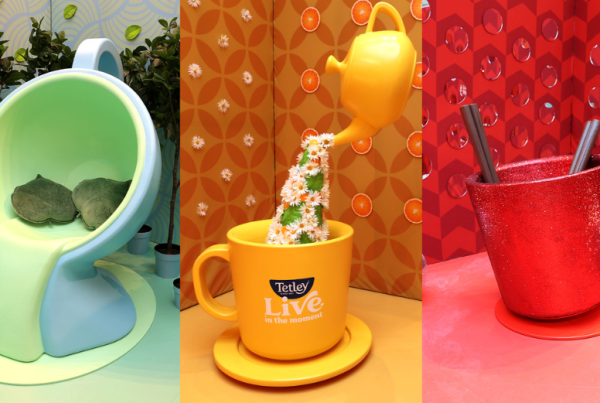“Advertising is dead . . . The future is storymaking.”
That’s according to the CMO of Mastercard, who recently set forward his brand’s renewed focus on providing brand experiences.
Mastercard is not alone in its approach, and we’ve recently seen more and more brands dedicate their ad budgets to experience creation.
Over the course of the past six months alone, we’ve seen Old El Paso literally power a restaurant with conversation; The Independent turn Brexit into an experience at The People’s March; and a Hendricks Gin townhouse filled with pygmy goats and miniature cocktails.
It’s easy to see why more brands are investing into this space, because experiential marketing is an incredibly effective method of driving brand and product reappraisal. People generally only engage with products they know, so immersive brand experiences that bring consumers face-to-face with the product in an innovative, creative way are a great method of building an audience.
And an experience is likely to stay in the memory far longer than your average TV, social or billboard campaign.
Although experiential marketing has made great strides in recent years, there is still one key barrier that’s preventing it from reaching maturity. Namely, the measurement problem.
Focus on engagement, not reach
Measurement is a recurring thorn in the side of experiential marketers like me, because there isn’t a single standardised way of monitoring the success of a campaign. This means that brands have to find solutions which will work best for them. There’s no point in launching an experiential campaign unless you have a robust strategy in place to measure its effectiveness.
One of the most common mistakes we see is when brands seek to measure the success of their experiential campaigns by reach, instead of engagement. Often, there is too much focus placed on the cost per sample and how many people a campaign reaches, and not enough on the quality of the interaction between the brand and its target audience.
At a time of tightening budgets and Brexit uncertainty, brands are more cautious with their marketing spend than ever. As a result, they need to activate in a way that ensures a guaranteed return on investment.
Yet they can be misguidedly lured by high-footfall times and locations, because they think the more people their brand can come into contact with, the more value the activation will deliver. And the result is brands heading en masse for rush hour at Waterloo, or Piccadilly at Christmas.
Yes, you may reach more people at these locations, and that this may help brands massage their reach stats for the case study. But, how many people are actually paying attention? And how many meaningful interactions are you building with consumers?
Smaller, and in some cases, more niche locations and events, can prove a better option. For instance, earlier this year, Swedish oat drink company Oatly activated a straight-talking ‘ditch milk’ campaign at the London Coffee Festival. The brand owned the (relatively niche) event by investing £250k in a targeted OOH spend.
The digital footprint
From an experiential marketer’s perspective, gaining traction on digital can also prove an enticing way of measuring the success of an infamously difficult-to-measure marketing spend.
This is why your experiences should be designed with sharing strategies in mind, and why your activation should never live and die on the day it takes place.
But brands shouldn’t force social sharing down consumers’ throats. If you want your experiences to receive organic amplification from attendees, then there needs to be a clear value exchange. Your visitors need to want to share the content from your experiences, and this means you need to create experiences that are unique and relevant.
We recently worked with Diageo to create a multi-sensory playground called Guinness Flavour Rooms, where people could explore the multi-dimensional flavours of Guinness. The event was a success over social media because we offered users something immersive and impactful to share with their followers.
Measure what matters
However, while monitoring social shares is important, it’s not the full picture. At HeyHuman we have a dedicated neuromarketing division to measure the impact of our campaigns at every stage of the journey, because it allows us to have a complete understanding of how our target audiences think and behave.
Without doing this deep dive, there is a danger that you’ll miss the insights that will transform your campaigns into ones that drive purchase intent.
This is just one way of measuring the success of an activation, and there may be others which will work better depending on what insight you’re looking to gleam from your measurement strategy.
Regardless of which measurement technique you use though, there is one crucial factor that you should use to judge the success of any experiential campaign; has your experience changed your audience’s behaviour?
Ultimately, if your experience doesn’t change this, then there was no point doing it in the first place.
Source: Experiential marketing won’t be viewed as effective until measurement gets fixed | Prolific London













